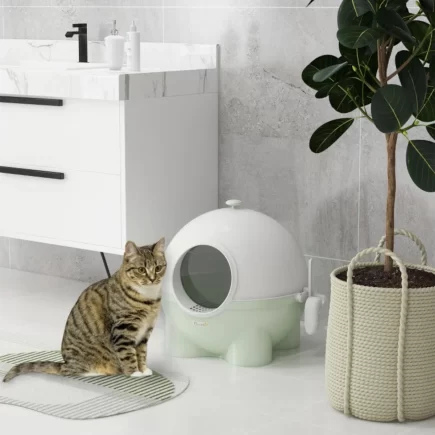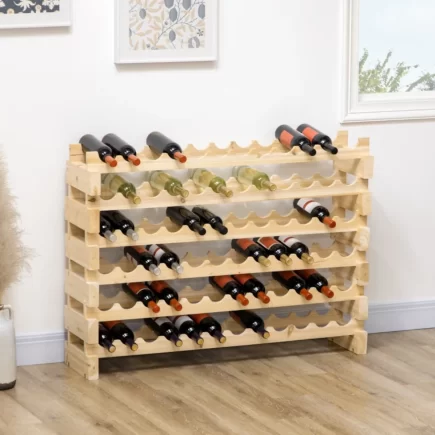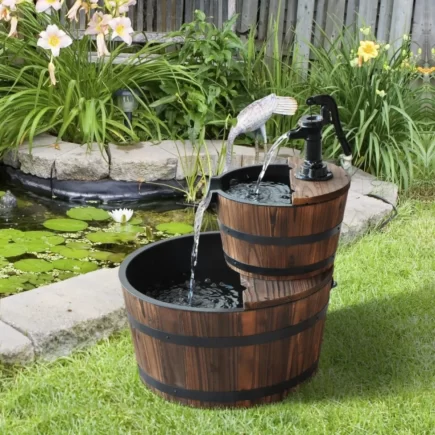Air fryers have transformed the way people cook at home. They’re compact, fast, and capable of turning out crisp, flavorful meals with far less oil than traditional frying. For busy weeknights, quick snacks, or healthier family dinners, the air fryer has become a go-to appliance.

Learning how to use an air fryer properly ensures you get the best possible results every time. From setup and preheating to cooking, troubleshooting, and cleaning, this guide walks you through every step in detail. By the end, you’ll not only know how to use your air fryer but also how to make it one of the most reliable and versatile tools in your kitchen.
Setting Up Your Air Fryer for the First Time
Before your first cook, you’ll need to get the air fryer ready for safe, efficient use.
1. Unboxing and Cleaning
Remove all packaging materials and stickers. Wash the removable basket and tray in warm soapy water. Dry thoroughly with a clean cloth. Wipe the main unit with a damp towel, never submerge it in water.

2. Placement and Ventilation
Always set your air fryer on a flat, heat-resistant countertop. Leave at least 5 inches of space behind and around the appliance so the exhaust vent can circulate air freely. Never use it under cabinets that could trap heat.

3. Power Connection
Plug directly into a grounded wall outlet. Avoid extension cords, which can overheat. Once plugged in, the control panel lights up and is ready for programming.

How to Preheat an Air Fryer
Preheating ensures your air fryer reaches the target cooking temperature before food goes in, reducing sogginess and producing crispier results. It mimics how you preheat an oven.
General Preheating Times
Most air fryers preheat in 3–5 minutes. A standard setting is 360°F for 5 minutes.
When You Can Skip It
- When cooking foods that brown fast on the edges (like broccoli).
- When reheating leftovers.
- When using recipes that require gradual heating.
Step-by-Step Instructions for Using an Air Fryer
Using an air fryer isn’t complicated, but to get the most out of it, you need to understand each stage of the cooking process. Below is a detailed, step-by-step breakdown that takes you from preparation to serving, with practical tips at every stage.
Step 1: Prepare Your Ingredients the Right Way
The way you prepare your food has a big impact on the final results.
- Oil: While an air fryer can cook without oil, a very light coating (1–2 teaspoons) helps food crisp evenly. Brush, toss, or spray lightly, never drench your food in oil.
- Seasoning: Apply seasoning after coating with oil so the spices stick to the food instead of falling off into the basket.
- Uniform Cutting: Slice vegetables, potatoes, or proteins into evenly sized pieces. This ensures everything cooks at the same rate. A half-inch difference in thickness can leave some pieces undercooked while others burn.
- Frozen vs Fresh: Frozen foods (like fries or nuggets) often need less or no oil since they already contain some fat. Fresh ingredients usually benefit from a light oil coat.
Pro Tip: For the crispiest results, pat ingredients dry with a paper towel before adding oil or seasoning. Excess moisture leads to steaming instead of crisping.
Step 2: Load the Basket Correctly
- Single Layer Cooking: Always arrange food in a single, even layer. Stacking food or piling it high prevents the hot air from reaching every surface.

- Spacing: Leave small gaps between items for optimal airflow. For example, don’t let chicken wings touch tightly, space allows heat to crisp all sides.
- Batch Cooking: For large amounts, cook in batches. It may take longer overall, but results will be crispier.
Pro Tip: For breaded foods like mozzarella sticks or chicken tenders, spray a light mist of oil over the top layer before cooking. This prevents dry floury spots and gives an even golden finish.
Step 3: Choose Presets vs Manual Settings
Modern air fryers typically come with preset buttons, but they’re not one-size-fits-all.
- Presets: Useful for quick cooking without guesswork. Buttons like “fries,” “chicken,” or “fish” automatically set a time and temperature. Great for beginners, but results vary depending on the food’s size and thickness.
- Manual Settings: Recommended for more precise cooking. Recipes often suggest exact temperatures and times that differ from presets. Manual control gives better consistency.

Example: A preset might cook fries at 400°F for 20 minutes, but hand-cut fries may be ready in 15 minutes. Manual adjustments prevent overcooking.
Step 4: Adjust Temperature and Time
Understanding the right temperature and timing ensures perfect results.
- Temperature Range: Most air fryers operate between 180°F and 400°F.
- Lower temps (300–325°F) are best for delicate foods like baked goods or dehydrating fruit.
- Medium temps (350–375°F) work well for proteins and vegetables.
- Higher temps (390–400°F) are ideal for fries, wings, and frozen snacks.
- Cooking Time: Use recipe guides or the included chart from your appliance. Food thickness, weight, and moisture level affect timing.
Pro Tip: When adapting oven recipes, lower the temp by 25°F and cut cooking time by about 20%.
Step 5: Cooking and Shaking for Even Crisping
One of the most common mistakes beginners make is leaving food untouched during cooking.
- Shaking: For small items like fries or veggies, shake the basket halfway through to expose all sides to heat.
- Flipping: For larger items like chicken breasts or pork chops, flip them once during cooking for even browning.
- Timing: Shake every 5–10 minutes depending on the recipe.
Pro Tip: Some advanced air fryers beep when it’s time to shake. If yours doesn’t, set a timer reminder.
Step 6: Check for Doneness Safely
Air fryers make it easy to check progress.
- Pulling the Basket: Unlike ovens, you can pull the basket out mid-cook to check food, most air fryers pause automatically when the basket is removed.
- Thermometer Use: Always use a meat thermometer for proteins. Internal temperatures should be:
- Chicken: 165°F
- Fish: 145°F
- Beef/Pork: 145°F (for medium)
- Visual Check: Look for golden-brown, crisp exteriors. Undercooked food often looks pale and soft.
Pro Tip: Don’t rely solely on preset timers, every model differs slightly. Trust both the thermometer and your eyes.
Step 7: Serving Like a Pro
Once food is done, serving safely and correctly keeps it delicious.
- Basket Safety: The basket will be extremely hot. Always place it on a trivet or heatproof surface.
- Serving Tools: Use tongs, silicone spatulas, or wooden spoons. Metal tools may scratch the nonstick coating.
- Resting Time: For meats, let them rest 2–3 minutes before cutting. This locks in juices and prevents drying out.
Pro Tip: To keep batches warm while finishing others, place cooked food in an oven set at 200°F until ready to serve.
Air Fryer Temperature and Time Guide
Below is a reference chart for popular foods.
| Food Item | Temperature | Time Range | Notes |
| French Fries | 400°F | 15–20 min | Shake halfway |
| Chicken Wings | 380°F | 18–25 min | Flip once |
| Chicken Breast | 375°F | 20–22 min | Check internal temp |
| Salmon Fillet | 370°F | 10–12 min | Brush with oil |
| Pork Chops | 375°F | 12–15 min | Use thermometer |
| Shrimp | 370°F | 8–10 min | Light oil spray |
| Veggies (mixed) | 375°F | 8–12 min | Toss halfway |
| Frozen Fries | 400°F | 18–22 min | No oil needed |
| Whole Chicken | 360°F | 55–65 min | Tie legs for even cook |
Foods That Work Best (and Worst) in an Air Fryer
Best Options
- Chicken wings, thighs, tenders
- Potatoes (fries, wedges, baked)
- Seafood (shrimp, salmon, fish sticks)
- Vegetables (carrots, zucchini, Brussels sprouts)
- Frozen snacks (spring rolls, mozzarella sticks)
Worst Options
- Wet batters (they don’t set properly)
- Lightweight greens like kale (blow around)
- Plain cheese (melts into a mess)
Troubleshooting and Mistakes to Avoid
- Soggy Food: Caused by overcrowding, reduce batch size.
- Burnt Edges: Temp too high, reduce heat by 10–15°F.
- Excess Smoke: Too much oil or fatty food, place bread at bottom to absorb grease.
- Uneven Cooking: Always shake or flip halfway.
- Dry Results: Add light oil spray or shorten cook time.
Cleaning and Maintaining Your Air Fryer
To keep your appliance working well, it’s important to clean an air fryer after every use.
- Unplug and let it cool.
- Wash basket and tray with warm, soapy water.
- Wipe the interior with damp cloth.
- For stuck-on food, soak the basket for 10 minutes.
- Avoid abrasive sponges to protect nonstick coating.
- To remove odors, run the fryer with lemon slices or plain bread inside for 5 minutes.

Beyond Frying: Other Ways to Use Your Air Fryer
Air fryers can do much more than crisp fries or wings. Once you master the basics, you can also explore:
- Baking: Muffins, cookies, and small cakes bake evenly thanks to the circulating hot air.
- Roasting: Vegetables, nuts, and small cuts of meat turn out golden and flavorful.
- Dehydrating: With the right temperature settings, air fryers can dry fruits, herbs, and even homemade jerky for long-lasting snacks.
- Reheating: Leftovers like fries, pizza, or chicken nuggets come back crisp instead of soggy.
Using an Air Fryer isn’t complicated, but doing it correctly makes all the difference. From setup and preheating to adjusting time and temperature, each step contributes to crisp, flavorful results. Once you master the basics, you’ll discover how versatile this appliance really is.
With practice, you’ll be able to cook almost anything: crispy wings for game night, roasted veggies for dinner, even desserts like muffins and hand pies. The air fryer’s speed, health benefits, and convenience make it a permanent fixture in many kitchens. Start simple, experiment, and you’ll soon be using your air fryer like a pro.
FAQs
1. Can I cook different foods at the same time in an air fryer?
Yes, but only if the foods require similar temperatures and cook times. Use a divider or tray to keep flavors from mixing, and shake or rotate halfway through for even cooking.
2. Can I line the air fryer basket with parchment paper or foil?
Yes, but always place food on top to prevent the liner from flying into the heating element. For best results, use perforated parchment sheets made specifically for air fryers.
3. Can I reheat soups, stews, or liquid-based dishes in an air fryer?
No, air fryers aren’t designed for liquids. For reheating, stick to solid foods like pizza, fries, or chicken. Use a stovetop or microwave for soups and sauces.




























